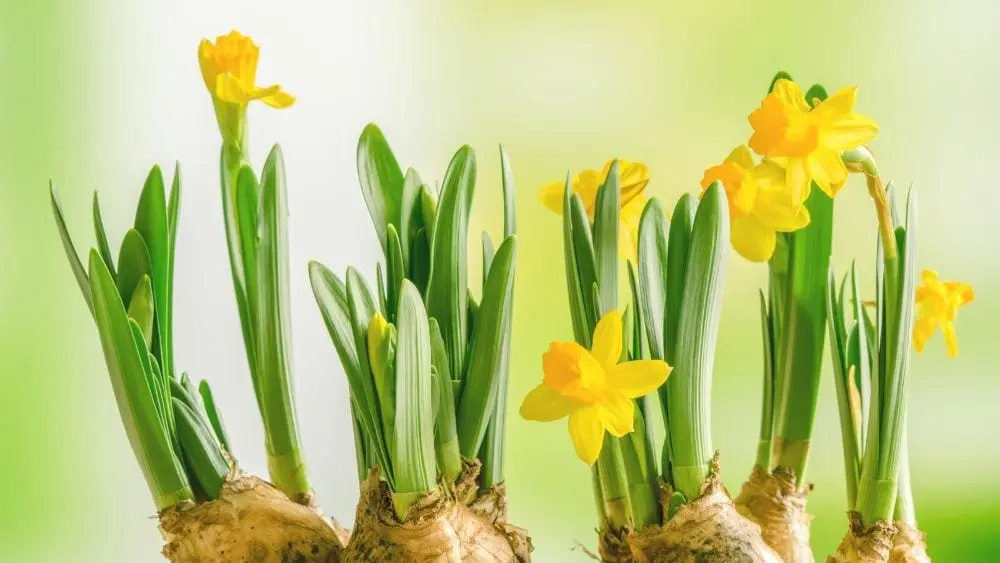
Well-manicured landscaping on those yards that you envy don’t happen magically or spontaneously. While they do require some TLC, you can create a beautiful lawn that wraps around your new home, too. Most of the action happens underground, and many lawn and garden experts are proponents of adding soil-enriching compost to yards. This organic material is pure gold for stimulating plant growth and for recycling. However, if it is not blended properly, it will create a rather unpleasant smell. If you fail to add the right ingredients to your cauldron, people stopping by to visit you in your new home aren’t going to mistake your front yard for a perfume factory.
Talking Trash
Before we examine how and why it’s beneficial for your plants, let’s talk about waste. It is not something people want to talk about. But face it – America is becoming a wasteland. The average American produces in excess of four pounds of trash every day. Many conservationists, also known as Mother Earth lovers, are seeking change in America. The land that supports humanity is literally overflowing with waste, much of which can be resolved by composting. If it sounds too smelly and scary, don’t be intimidated; we can get you started.
“Composting is the natural process that occurs when organic matter breaks down into granular material,” reports Anoffgridlife. There are a multitude of reasons why you should consider joining the world of composters. Researchers say you can remove 20-50% of your household waste through composting. That’s startling when you consider that today’s active landfills are responsible for 560,000 acres. Choosing to compost requires little investment and involves very little elbow grease.
It’s a natural way to do your part in reducing the nation’s waste problem and learn about nature and gardening while you’re at it. Instead of dumping food scraps in a landfill, composting them can transform that garbage into organic matter or fertilizer. You can use this mixture on your home garden, also.
Remember, your compost is only as good as your ingredients. Virtually anything that was once alive or was made from a living organism can be used. This includes fruit and vegetable scraps, coffee filters, newspaper, cereal boxes, coffee grinds, green and dry leaves and twigs from the yard and even eggshells.
Items That Don’t Make the Cut
You do not want to include meat, dairy, cat/dog feces, bones or oils; these are the culprits which can attract animals and create rancid odors. And speaking of pungent smells, some homeowners add shovels of manure because it is packed with nutrients. You are forewarned: it will stink until the breakdown process is complete.
It’s crucial that you master the carbon/nitrogen ratio. The dry, brown material such as branches, twigs and leaves are your carbon rich matter; you need lots of this. The nitrogen richness is derived from green lawn material, kitchen waste – such as used coffee filters – and food scraps. Remember, as you make your concoction, you want it to be moist, but not wet. Adding more carbon rich matter will allow oxygen to penetrate and nourish the organisms. The more nitrogen you compost, the more likely you’ll have odor.
The Choices: Compost Bin or Tumbler
When choosing a composter for your yard or garden, consider the two main types: bins and tumblers. Both have a relatively similar footprint, but the tumbler costs more. Consider these differences to help with your selection.
The Nitty Gritty Details of a Tumbler
These enclosed contraptions are designed to simplify composting by accelerating the process using aeration and heat to break down the materials. They come in many styles; you can roll some across the ground, and others are on a rotatable base. Another choice is to purchase one containing a central axle. If you select a manual style, be sure to pick one that’s fairly easy to turn; you’ll need to spin it to circulate oxygen which contributes to the decomposition.
The tumblers are proven to work in half the time of a traditional compost bin, but since they hold more volume, they will take longer to make a compost. Better Homes and Gardens suggests turning it once a week to prevent material from becoming matted and developing an odor. You can select a tumbler that houses two chambers: one for fresh materials and one for “cooking.” To speed up the process, rotate the latter chamber several times a day. If you purchase a single compartment tumbler, be prepared to wait longer to see results because you’ll continually be adding bulk.
Keeping it Simple With a Simple Bin
If you want cheap, just grab a bin and fill it with the above-listed household matter. Growveg says this is the way to go if you want compost quickly. These open-bottomed houses are not meant to be moved, so pick a good location and stick with it. Grab a pitchfork or a shovel to churn your bulk effectively but be careful not to puncture the plastic siding. The more you turn, the quicker you get your prized black gold. There is also the issue of knowing when to stop adding material so it can “cook”. The bin will not produce compost as quickly because it doesn’t retain heat like the tumbler. Open-bottomed bins have the advantage of draining excess water, or “compost tea” from the material. If you live in colder areas the bin might have difficulty heating up, which will push back your finishing date.
How to Apply “Black Gold”
There never seems to be enough of this priceless fertilizer! Sprinkle it generously around your lawn, garden, and house plants to nourish the soil. It’s amazing that those gross, fungus-housing vegetable peels become a nutritious, dark earthly compost. You’ll know it’s ‘ripe for use’ when it’s soft, crumbly, natural smelling, and dark brown or black.
Whether you select a bin or tumbler, delight in knowing you are assisting Mother Nature in keeping our planet healthy. Compost is the best soil amendment available and it’s free! It serves as a great fertilizer because it doesn’t contain harsh chemicals like petroleum found in manufactured products. It won’t be long until the compost works its magic – giving you the green, green grass of home.

Heather Allen is a freelance writer who began her career 20 years ago at a small Texas NBC affiliate, while attending SFASU. She’s written blogs on a diverse range of topics.
 Tips for Making your Holiday Party Merry and Bright – and Safe
Tips for Making your Holiday Party Merry and Bright – and Safe